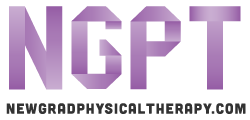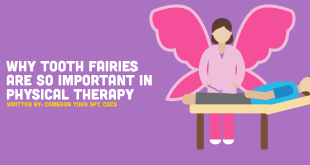Many clinicians are aware of the importance of looking at movement versus an isolated approach to evaluation and treatment, but struggle to find a way to efficiently create a treatment plan. There are many different ways to go about movement assessment.
This article will highlight the Selective Functional Movement Assessment as well as the basic principles rooted in the Janda approach. Overall, we can simply think about movement and movement assessment as a way to logically evaluate regional interdependence.
Breaking Down The Body Into Components
If we simply break down each joint or general region of the body into its primary function you will notice that the body is made up of alternating segments of mobile and stable joints. We get it – if you look at a joint like the hip, it is obviously important that it have good stability, however, a lack of mobility at the hip can be detrimental to other segments in the kinetic chain. We like to think of stability at these mobile joints as “controlled mobility”.
Let’s take the example of chronic low back pain:
The “normal” pattern we should see includes:
- mobile hip
- stable lumbopelvic girdle
- mobile thoracic spine
If the hip is stiff and immobile, the body will find a way to move and often times result in a flip of the normal pattern:
- stiff thoracic spine
- mobile lumbopelvic girdle
- stiff hip joint
Ultimately the lumbar spine is designed to rotate about 1-3 degrees per segment, or about 10 degrees total for the entire lumbar spine on average.
Globally, impairments found in movement assessments can be labeled as a mobility problem or a stability problem. Let’s take a look at the fundamental concepts behind testing, treating, re-testing and assessing results for functional movement problems.
Concept One – The Functional Continuum
Most patients will enter your clinic with an obvious source of pain or dysfunction – be it a painful lower back, swollen knee or a restricted shoulder. Their true cause of pain or dysfunction is less obvious. That is the magic of the SFMA. It can clear away all the compensations and conscious sources of pain or dysfunction and highlight the true cause of the problem. The majority of patients are unaware of the true cause(s) of their pain or dysfunction which puts them into the first stage of the functional continuum, subconscious dysfunction.
- Subconscious Dysfunction– this is the initial phase for most patients when first seen by the clinician. This is where the client is totally unaware of their true dysfunction (it is in their subconscious) or they are convinced their problem is elsewhere.
- Conscious Dysfunction – this is what happens after you perform a SFMA or other movement assessment. The client is now aware of their true dysfunction (it is in their consciousness) and they can start to address the real cause.
- Conscious Function – this phase is entered into once the client can perform the correct functional pattern, but the pattern is not automatic (it is only functional with conscious control). They still need conscious effort to perform a good pattern of movement.
- Subconscious Function – the final stage is where the client can now perform a functional pattern automatically (it is in their subconscious control) without having to think about the correction.
Concept Two – The Three R’s
The next concept important to understand is the type of treatment phases that a client would undergo. There are three treatment phases which correlate directly with the components of Scrape, Tape, & Move:
- Reset – This is defined by any manual intervention that helps the patient improve mobility or motor control with little or no active participation. This means that a reset should not be a guided exercise. It should be a manual procedure demonstrated by competent clinical maneuvers. These can include mobilization, manipulation, chiropractic adjustment, myofascial work, soft tissue work, trigger point therapies, dry needling, acupuncture, muscle energy techniques, craniosacral techniques, A.R.T. (Active Release Technique), IASTM techniques, augmented therapy and any other techniques that involve kinesthetic input and manipulation or interaction with tissues.
Scrape, or Instrument Assisted Soft Tissue Mobilization (IASTM) is one excellent way to reset mobility or facilitate normal motor control. You can learn more about IASTM in the The Scrape, Tape, and Move course which highlights the background and supporting evidence behind IASTM as well as the various tools that may be used to perform IASTM.
- Re-Enforce – This is how a clinician discusses the contraindications that have become necessary to enhance rehabilitation with their patients. Simple discussions about hydration, sleeping position, ergonomic position, driving position, workout modification (so as not to re-exacerbate symptoms), footwear, orthotics, bracing, splinting and weight-bearing status as well as the use of and forms of biofeedback, leukotape, and kinesiology or biomechanical taping create a proper reinforcement and behavior modification that facilitates the original manual treatment.
This is done in an attempt to prevent the patient from defaulting back to a poor or old movement pattern following a successful treatment, simply by perpetuating poor habits and activities that could re-exacerbate pain and dysfunctional movement behavior.
Tape, both kinesiology tape and biomechanical taping will be highlighted during the course. Evidence to support the use of various taping techniques is presented as well as practice of several common patterns for common movement dysfunctions.
- Reload – Lastly is reload. Reloading is the application of a corrective exercise that is deduced from the SFMA particularly to enhance function in a dysfunctional non-painful pattern. It would be inappropriate to attack the dysfunctional, non-painful pattern with a direct exercise technique. It would be much better to try a manual mobility or stability technique first and demonstrate some degree of improvement through proper resetting of the sensory information, followed by adequate reinforcement that together demonstrate improved movement behavior even if it only seems to be temporary. This is the window of opportunity where exercise finds its most fertile soil.
Move, the final component of this course will bring together all of the aspects presented to this point and integrate impairment specific exercises to restore normal functional movement. The final concept of the four by four will help each clinician become more effective and efficient in their exercise selections.
Concept Three – Four by Four Exercise Progressions
This last concept describes the matrix to follow when naming and building an exercise progression. This is how we systematically reload new software into a dysfunctional system. “Four by Four” refers to the four possible exercise positions, combined with the four types of resistance used.
Utilizing the 4 x 4 concept guides clinicians in their ability to develop logical exercise programs in a regress to progress manner. With regards to the resistance, exercises are identified based on the intension behind the exercise choice; meaning, one exercise may be labeled in multiple ways depending on the reason it is selected.
The most common progression to follow for the 4X4 matrix is the following: 1-1; 1-2; 2-1; 2-2; 3-1; 3-2; 4-1; 4-2; 1-3; 1-4; 2-3; 2-4; 3-3; 3-4; 4-3; 4-4.

We can increase the difficulty of any exercise by either changing the position (supported or non-weight bearing being the easiest and standing being the toughest) or changing the resistance (No-Load with feedback being the easiest and Load without feedback being the hardest). All exercises can be classified into one of these combinations.
Feedback is defined as any technique to inhibit or facilitate tone, assist a movement or alter a motor control firing sequence during or before a task that is required. A patient should demonstrate appropriate control before progressing to activities without activation or before attempting to add resistance. Taking these steps to help develop subconscious function of motor control can be the difference between success and failure.
Once patients can master 4 x 2 (standing no load/no feedback) exercises, advancements in treatment to include load, speed, and power may help progress to higher level function in patients and athletes.
In the end, the goal of any treatment is to eliminate pain and restore function in a timely manner. By using a system based approach to assess movement and the treatment concepts outlined in Scrape, Tape, & Move, clinicians can provide patients with the highest quality care with ease.
Learn More about Functional Movement Techniques Here

This article was co written by Ashley Campbell PT, DPT, SCS, CSCS and
Mike Voight PT, DHSc, SCS, OCS, ATC, CSCS, FAPTA

Ashley Campbell PT, DPT, SCS, CSCS
Ashley graduated with her Doctorate in Physical Therapy from Belmont University after completing her BS in Exercise Physiology at Ohio University. She is a Board Certified Specialist in Sports Physical Therapy as well as a Registered International Sports Physical Therapist and Certified Strength and Conditioning Specialist.
Ashley has worked extensively with athletes at all levels including PGA, NFL, NBA, NHL, and MLB. She enjoys utilizing a variety of manual therapy techniques in clinical practice including IASTM and Trigger Point Dry Needling which she feels are a great adjunct to joint mobilizations and corrective exercise in developing a well-rounded and effective plan of care, especially in hip patients.
Ashley lectures nationally and internationally on topics ranging from hip rehabilitation, to injury prevention and functional movement, including speaking at the International Society for Hip Arthroscopy. She is a lead instructor with Advances in Clinical Education, and holds an Adjunct Faculty position with Belmont University’s School of Physical Therapy in Orthopedics and Sports Medicine. She serves as the managing editor of the International Journal of Sports Physical Therapy and has won awards for leadership and clinical skills from Belmont University and the APTA’s Sports Physical Therapy Section.

Mike Voight PT, DHSc, SCS, OCS, ATC, CSCS, FAPTA
Mike is currently a professor at Belmont University School of PT and is the Editor-in-chief at the International Journal of Sports PT Mike has an extensive background in research and clinical care and is an instructor for Scrape, Tape, and Move – a course dedicated to teaching a foundational approach to treating functional movement.
 NewGradPhysicalTherapy.com The Largest Online Resource For New Grad Physical Therapists
NewGradPhysicalTherapy.com The Largest Online Resource For New Grad Physical Therapists






